
#BookSky
02.08.2025 08:10 — 👍 42 🔁 4 💬 2 📌 1@funkysam3.bsky.social
35, likes space, science, ocean stuff and books.

#BookSky
02.08.2025 08:10 — 👍 42 🔁 4 💬 2 📌 1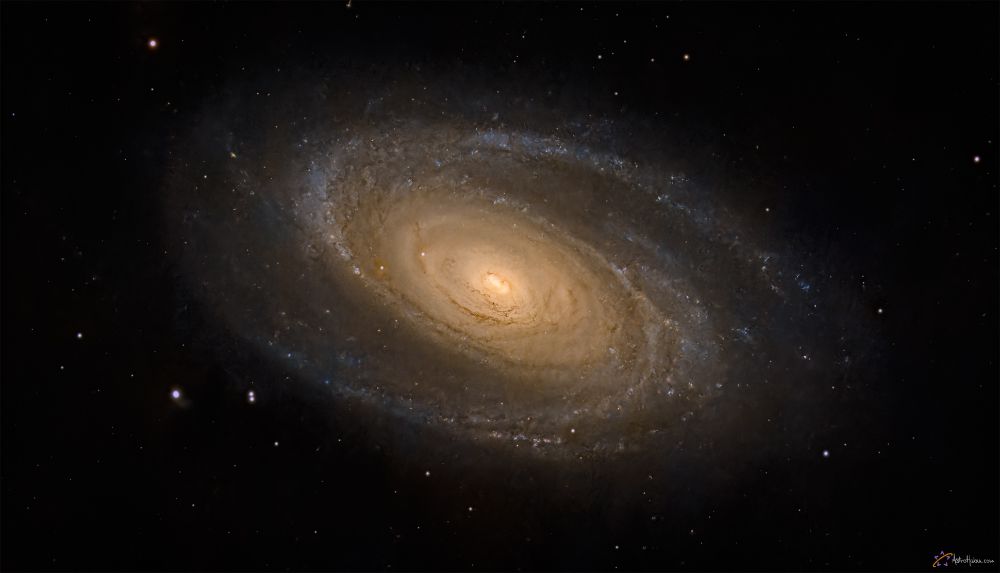
It had been a couple of years since I last visited the Bode’s Galaxy, a target I had only captured in the past together with the nearby Cigar Galaxy. Realizing I didn’t even have a standalone shot in my archive, I took advantage of a couple of rare clear nights — and here it is! 🔭
#astrophotography
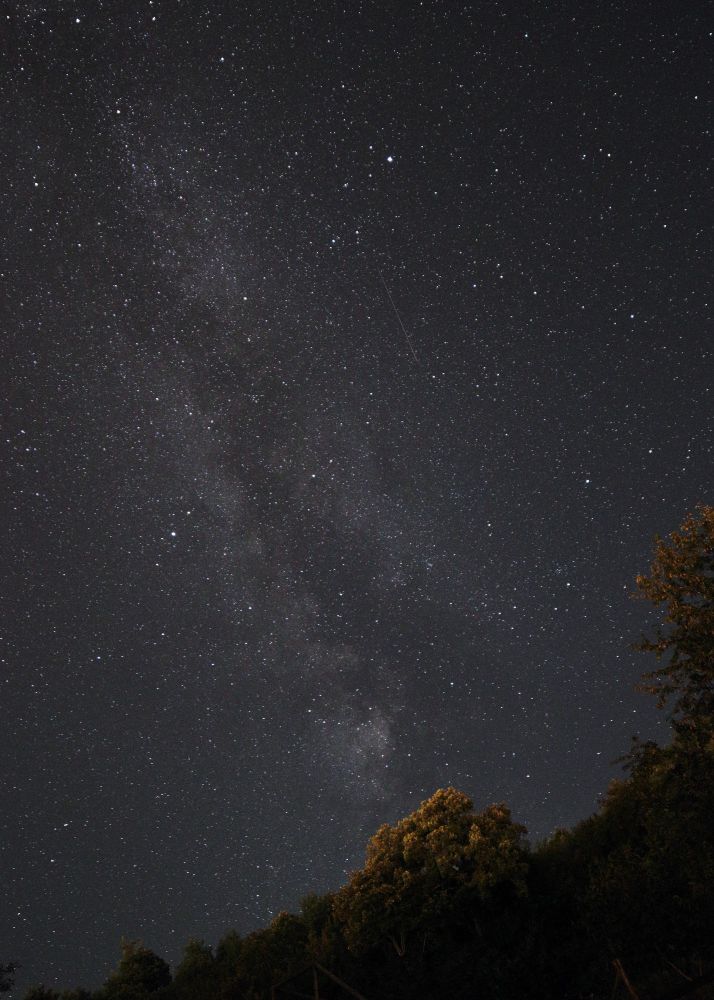
A night sky full of stars. In the foreground, trees on the hillside are visible below.
I will wait for you in the night’s garden of light.
#nightscapes #starrynight
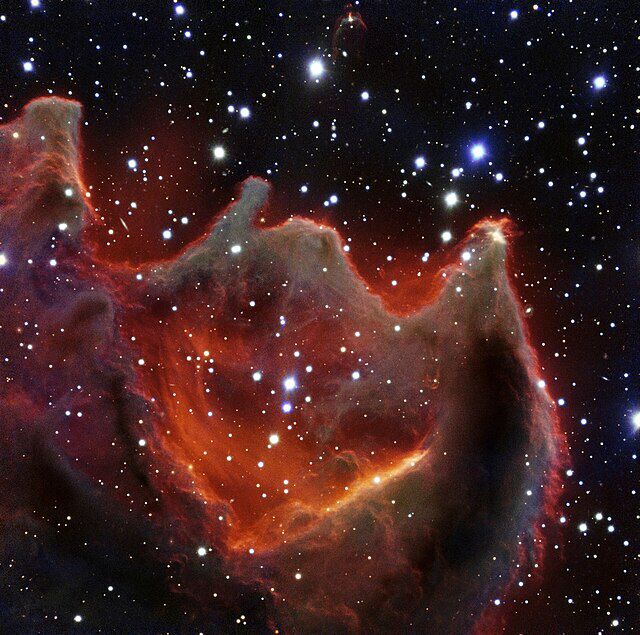
Read more here: en.wikipedia.org/wiki/CG_4?utm_
11.01.2025 02:50 — 👍 23 🔁 2 💬 1 📌 0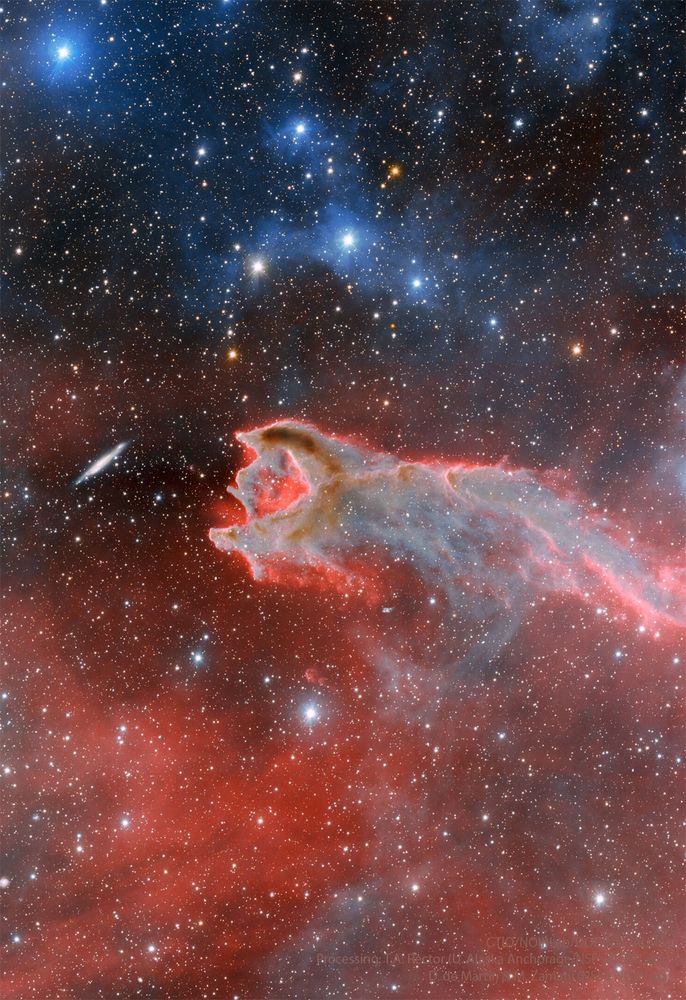
Cometary globules are gas clouds with dusty heads and tails, often forming stars. The rupture in CG4’s head is unexplained, and the nearby galaxy is unrelated.
Credit: CTIO, NOIRLab, DOE, NSF, AURA; Processing: T. A. Rector, D. de Martin & M. Zamani.
Is this for a project you can't talk about yet...? I love your languages and always look forward to seeing what else you might be working on. Hope you feel better soon!
08.01.2025 15:07 — 👍 1 🔁 0 💬 1 📌 0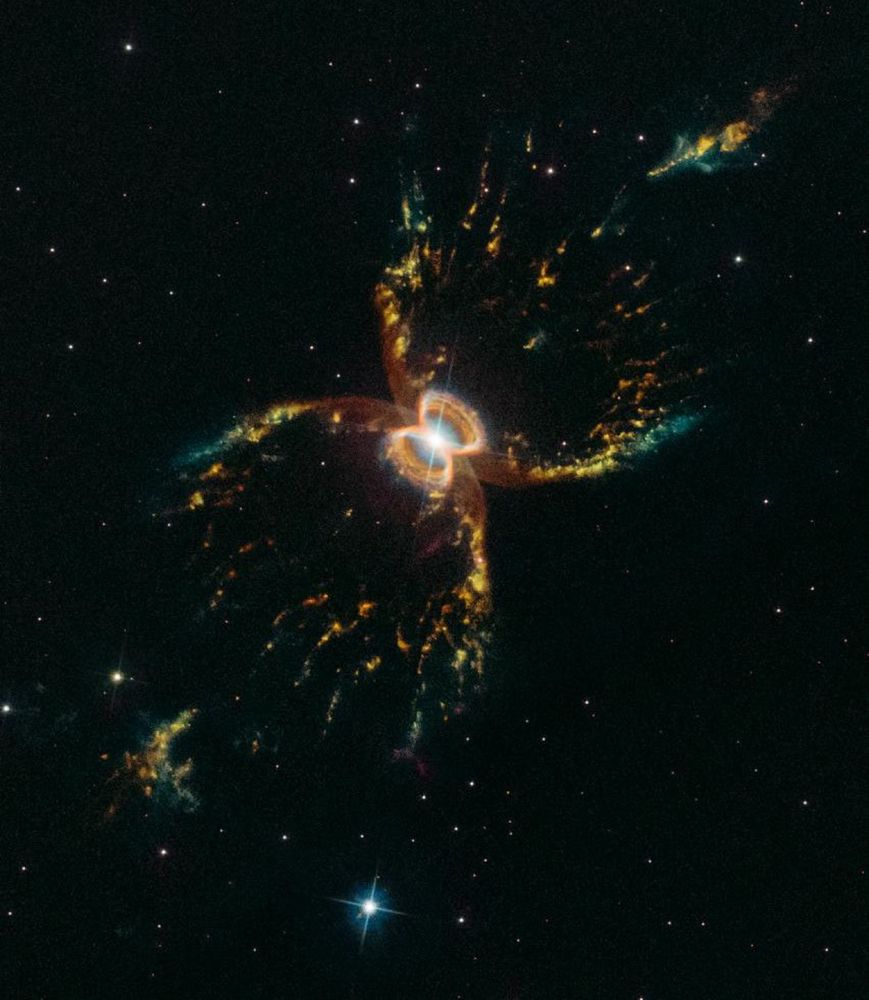
It appears to have two nested hourglass-shaped structures that were sculpted by a whirling pair of stars in a binary system. The result is that both stars are embedded in a flat disk of gas stretching between them. This belt of material constricts the outflow of gas so that it only speeds away above and below the disk. The result is an hourglass-shaped nebula. The bubbles of gas and dust appear brightest at the edges, giving the illusion of crab leg structures. These "legs" are likely to be the places where the outflow slams into surrounding interstellar gas and dust, or possibly material which was earlier lost by the red giant star.
the southern crab nebula ✨
image credit: NASA, ESA, and STScI
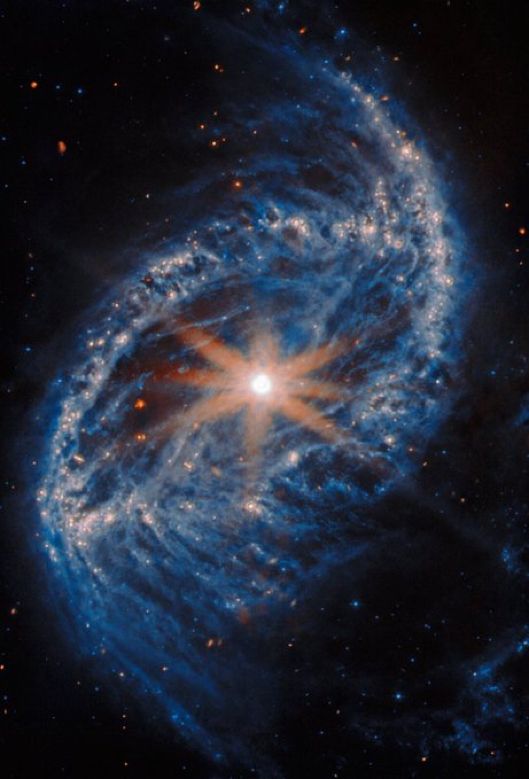
A spiral galaxy, seen close-up. Its core is a round spot that glows intensely bright, crowned by eight long and spikes that extend across the galaxy, artefacts of the telescope’s structure. Its disc is an oval shape with edges made of very thick and cloudy arms of gas and dust, mostly blue but paler and brighter around patches of stars. Wisps of darker dust also fill the inner disc and swirl off the ends of the arms.
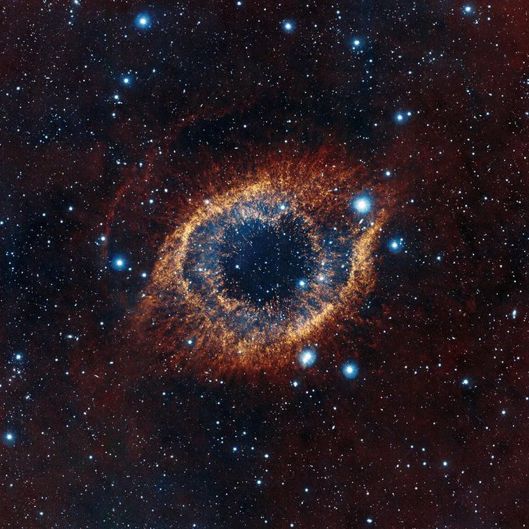
The Helix Nebula appears as an eye in the center of the image. The outer layers appears yellow, while the inner layers are a darker blue color. There are many blue stars visible around the nebula. The background of the image shows dark red space.
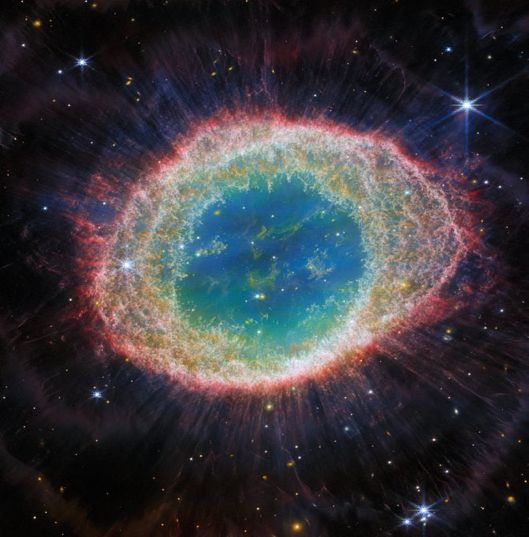
This image of the Ring Nebula, taken by Webb’s Near-Infrared Camera, appears as a distorted doughnut. The nebula’s inner cavity hosts shades of blue and green, while the detailed ring transitions through shades of orange in the inner regions and pink in the outer region. The ring’s inner region has distinct filament elements. Stars litter the scene, with a particularly prominent star with 8 long spikes in the top right corner.

A small white dot with a large orange debris disk around it, resembling an eye.
eyes in space 👁️🌌
19.12.2024 22:31 — 👍 4247 🔁 497 💬 68 📌 25
Ocean moon
15.12.2024 14:55 — 👍 1971 🔁 157 💬 24 📌 1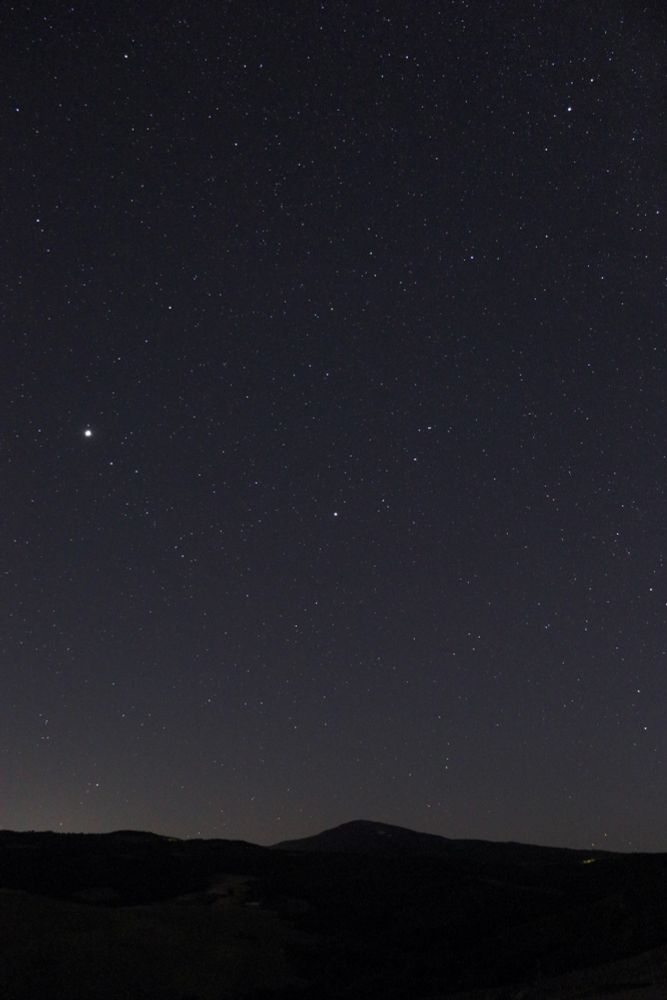
A clear night sky filled with stars. Below, a dark range of hills forms a silhouette against the starry background. Details: Canon EOS 250D with kit 18mm F4 lens, ISO 1600, 15s. Location: Val d'Orcia, Italy
When you just need silence and stars.
#nightscapes
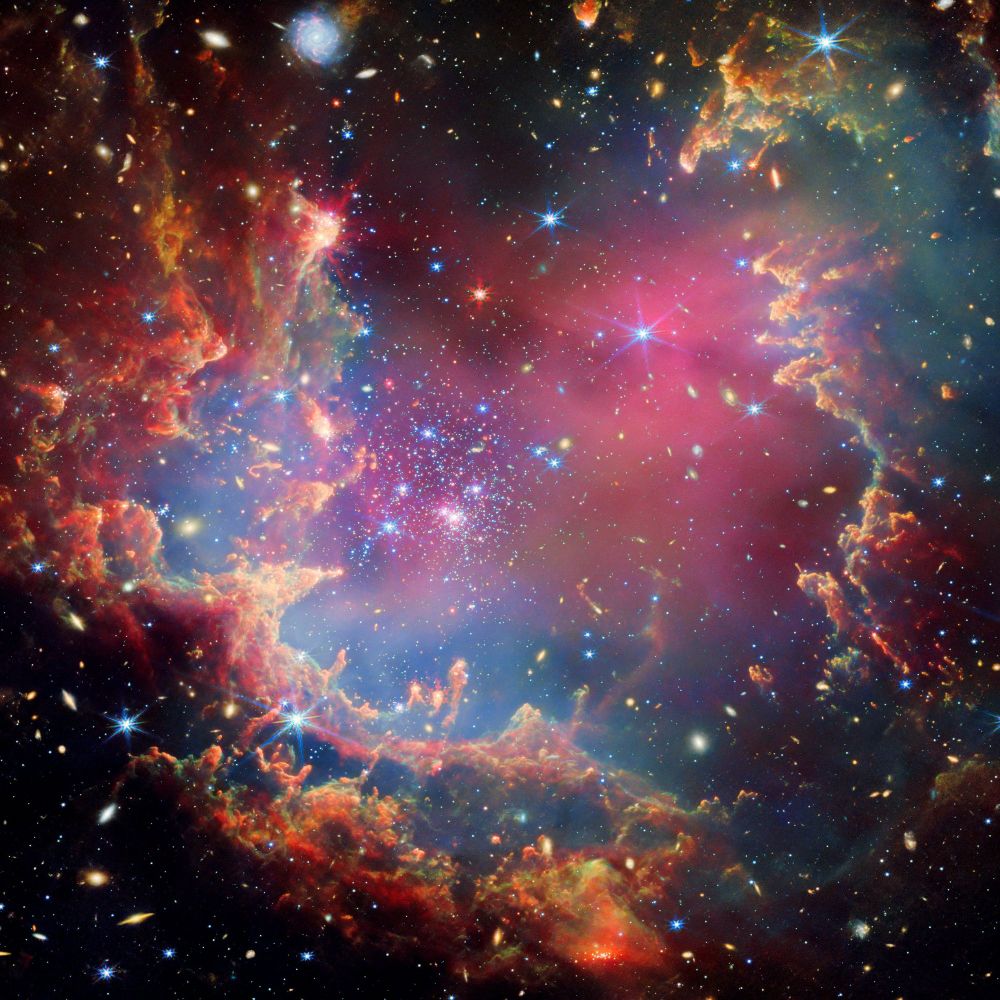
The young star cluster NGC 602, by #JWST
08.12.2024 16:40 — 👍 4118 🔁 359 💬 45 📌 12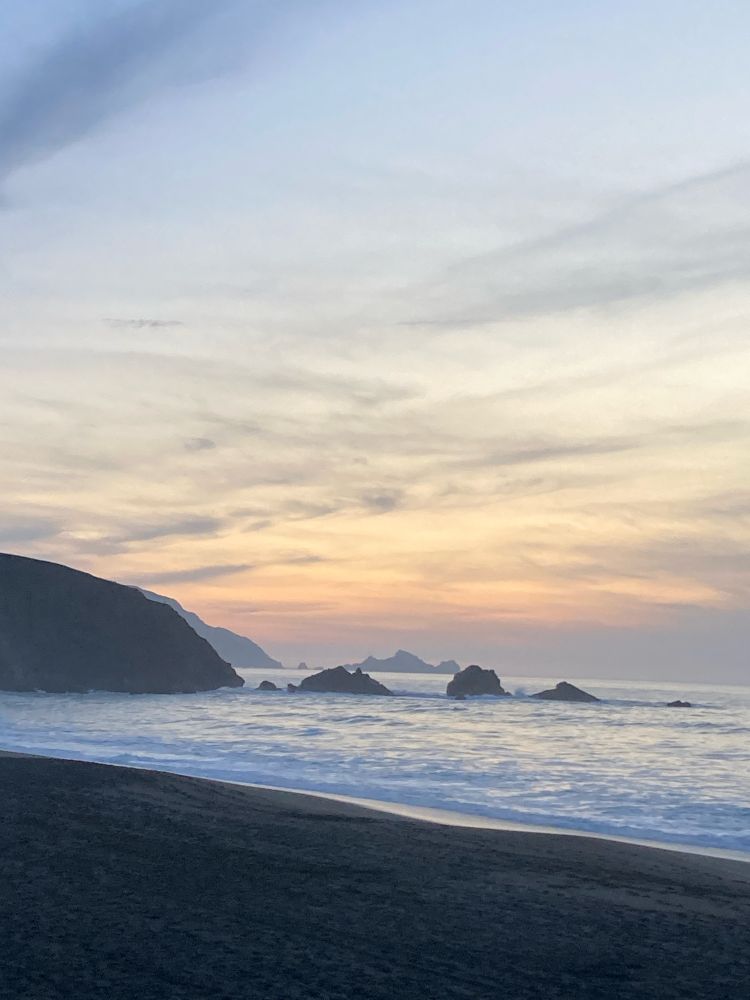
pale white, gray & pink clouds in a hazy sky at sunset over a slightly choppy, frothy white ocean, waves breaking at the shore rolling in past two rows of rock formations
beach walk sunset in pacifica
08.12.2024 05:41 — 👍 2227 🔁 92 💬 42 📌 1Beautiful timelapse of the Moon, Venus, and the Pleiades Cluster rising just before sunrise over the Ko'olau Mountain Range in O’ahu, Hawai’i. 💫💫💫
📽: Travis Shak 👏👏👏👏
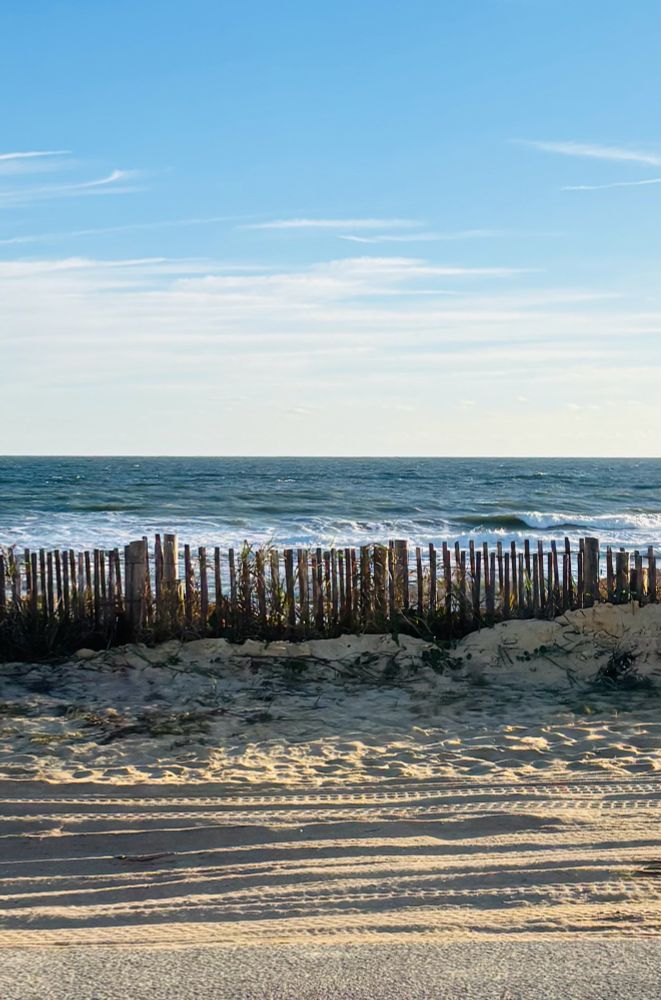
Bluesky, blue wave ocean, dunes with a fence, more sand
Good Morning bsky
Feel the feelings
🕶️☀️🌊
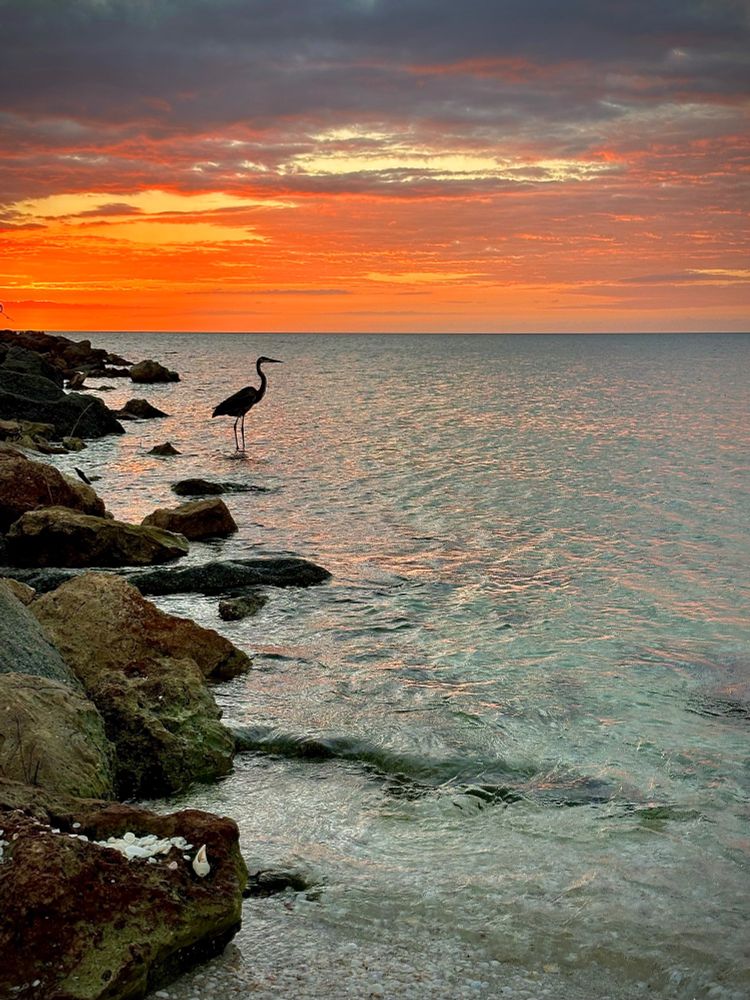
Calming waters, sunset afterglow, and fellow observer keeping me a company 🦩
08.12.2024 13:23 — 👍 8466 🔁 457 💬 131 📌 14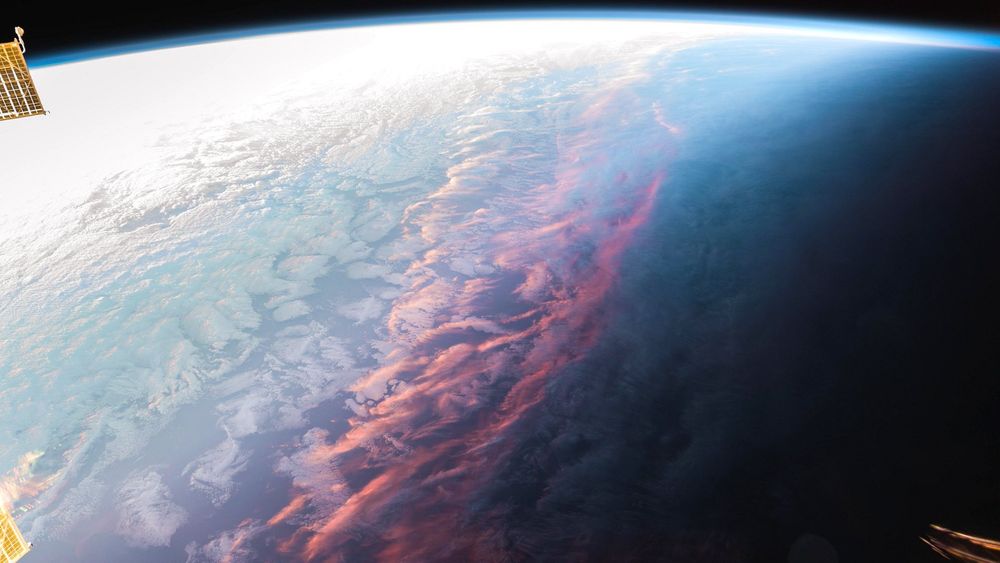
This is what a sunset on Earth looks like from orbit.
08.12.2024 01:59 — 👍 400 🔁 83 💬 3 📌 2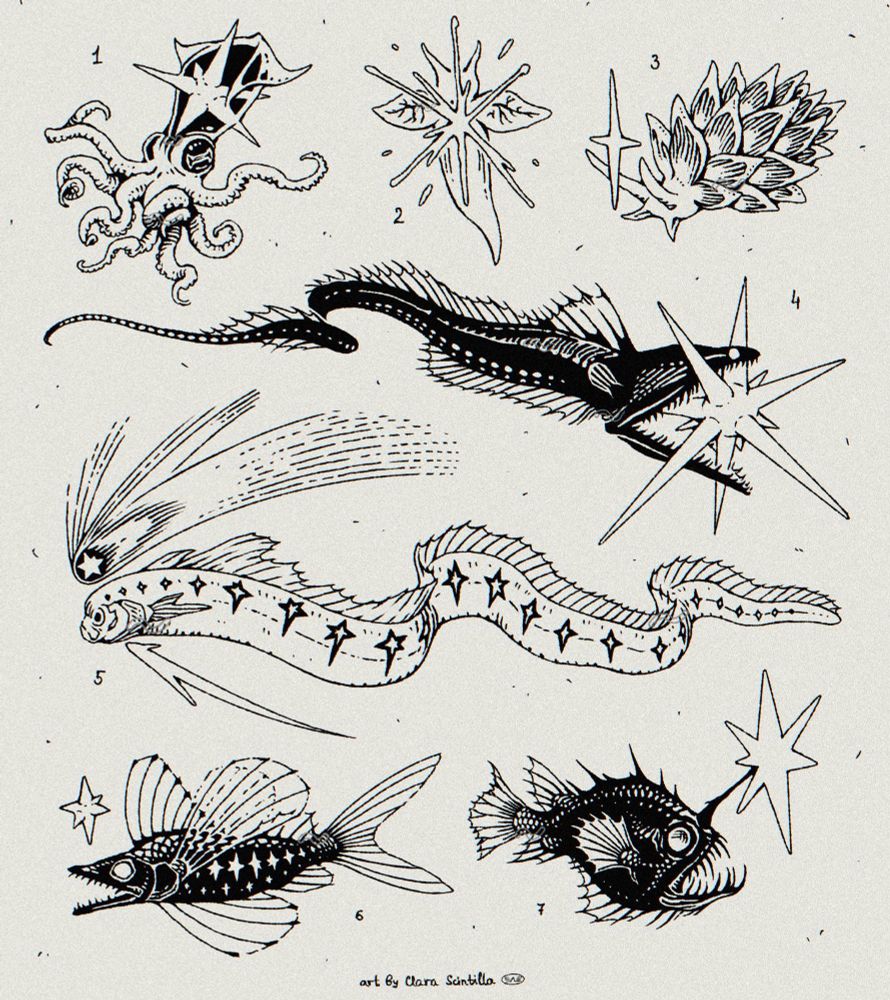
Deep ocean creatures
07.12.2024 07:04 — 👍 5381 🔁 1645 💬 29 📌 10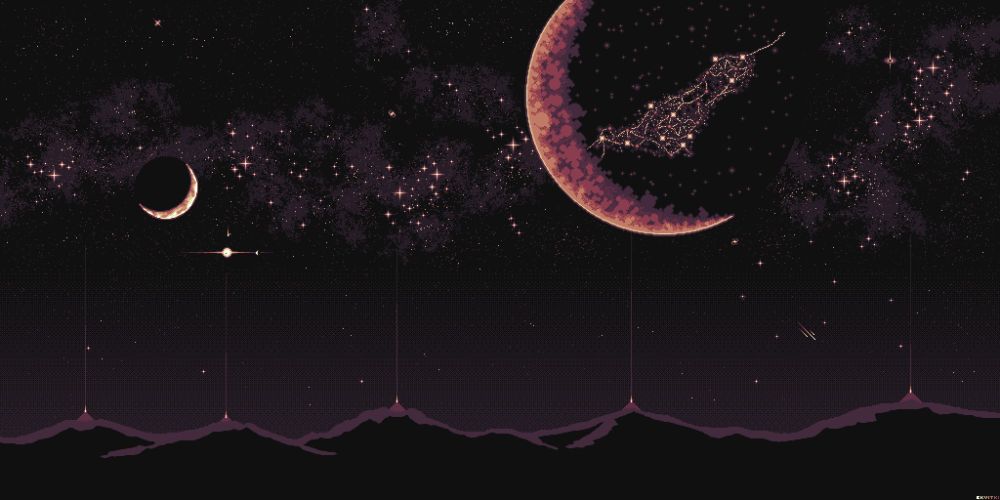
#pixelart #art #space #maroon #aesthetic #vibe #pixel #scifi
08.12.2024 09:05 — 👍 469 🔁 101 💬 10 📌 1
Interesting fact: Every 60 minutes, the Universe pushes outward by a billion miles in all directions!
(Image credit: ESA/Hubble)
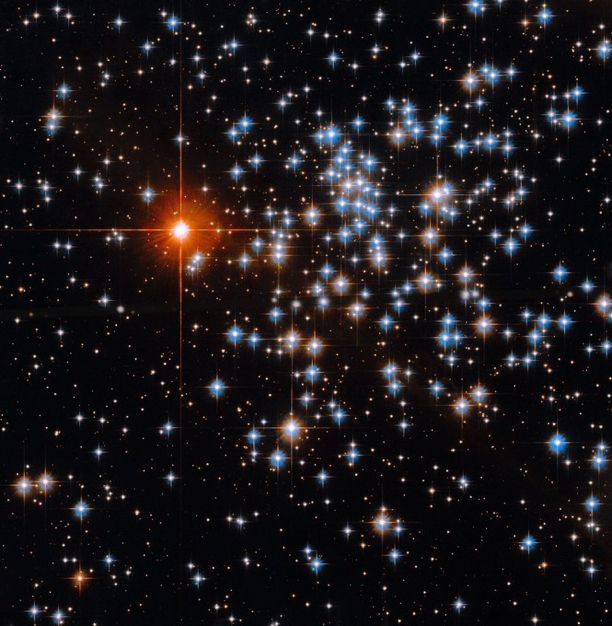
Several stars with pointed diffraction spikes gleam in shades of white, orange, and blue against a black backdrop of space.
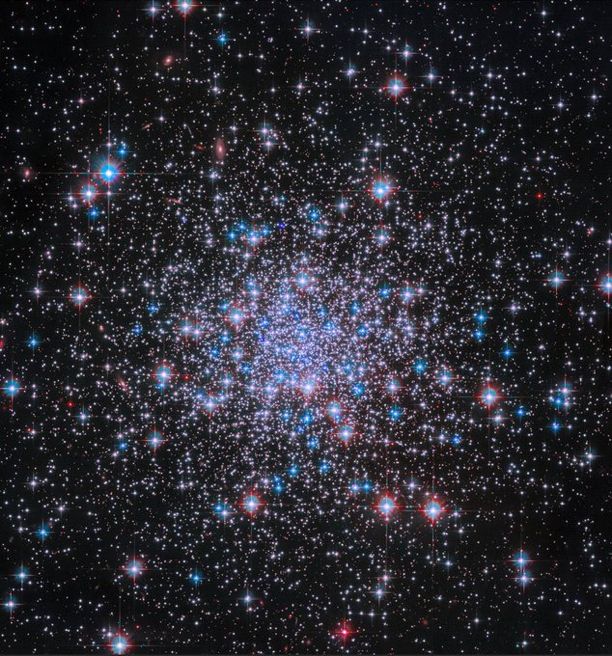
Thousands of bright stars shine against black space, more tightly condensed near the image’s center. The stars glint in shades of white, blue, and red, and diffraction spikes are visible around the foreground stars.
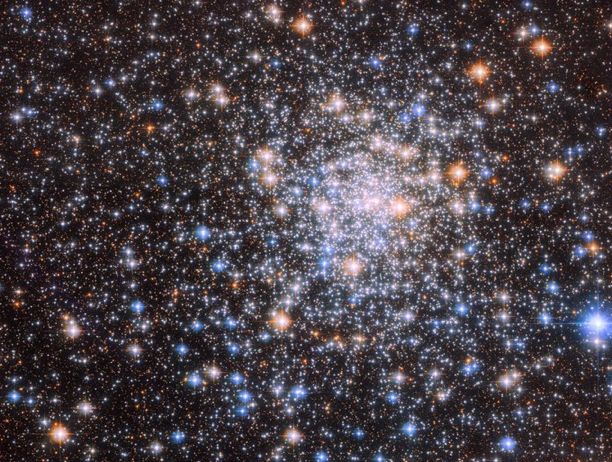
A cluster of stars in warm and cool colors. The whole view is filled with small stars, which become much denser and brighter around a core just right of center. Most of the stars are small, but some are larger with a round, brightly colored glow and four sharp diffraction spikes. Behind the stars, a dark background can be seen.
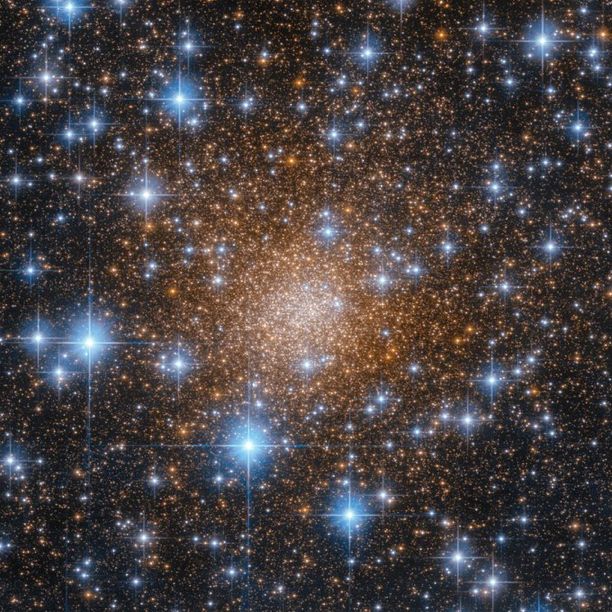
This star cluster features several orange stars packed together near the center and growing more sporadic toward the image's edges. In the foreground, bigger blue stars with diffraction spikes shine, all against a black backdrop of space.
some beautiful star clusters seen by hubble ✨
07.12.2024 21:54 — 👍 436 🔁 56 💬 9 📌 2
Three bright, blue-white stars at upper left mark the beginning of a bright and dusty reddish-brown, orange, and white swathe of glowing gas and dust, with its upper portions loosely resembling a snowman with a scarf and top hat. The rest of the image is dark and full of sparkling stars, many with diffraction spikes.
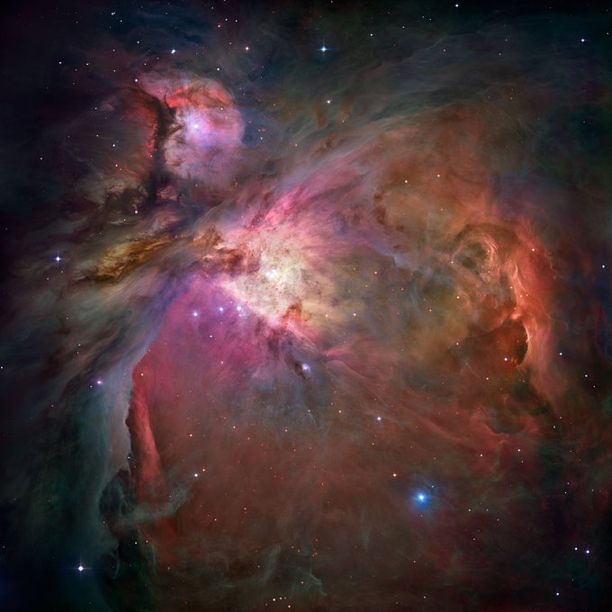
This expansive and cloudy cosmic landscape has sweeping clouds that shine in pink, yellow, orange, and brown. Some large, bright stars are visible glowing within the clouds and other foreground stars are peppered throughout the image.
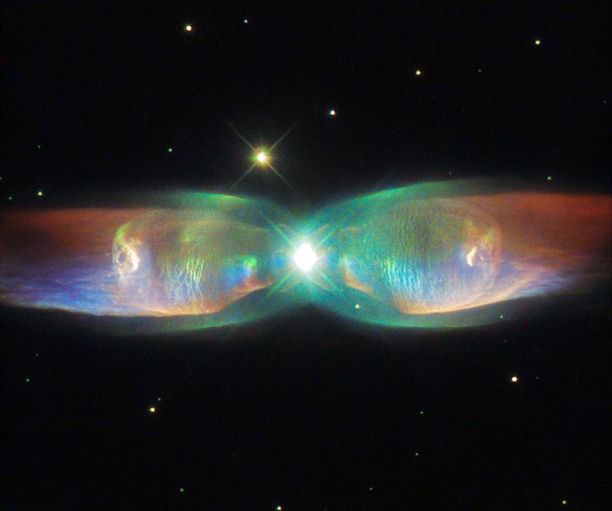
A bright white point of light is surrounded by glowing lobes of gas to the left and right, shining in green that extends into orange and blue. Distant stars dot the black background of space.
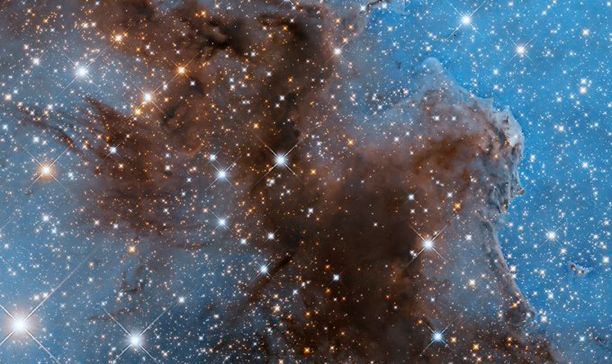
This Hubble view of a portion of the Carina Nebula has a bright, pale blue background dotted with shining white stars. Some foreground stars have diffraction spikes. A brown region of gas and dust snakes through the center of the image.
i’m a nebula kind of girl ✨
07.12.2024 20:46 — 👍 468 🔁 55 💬 10 📌 3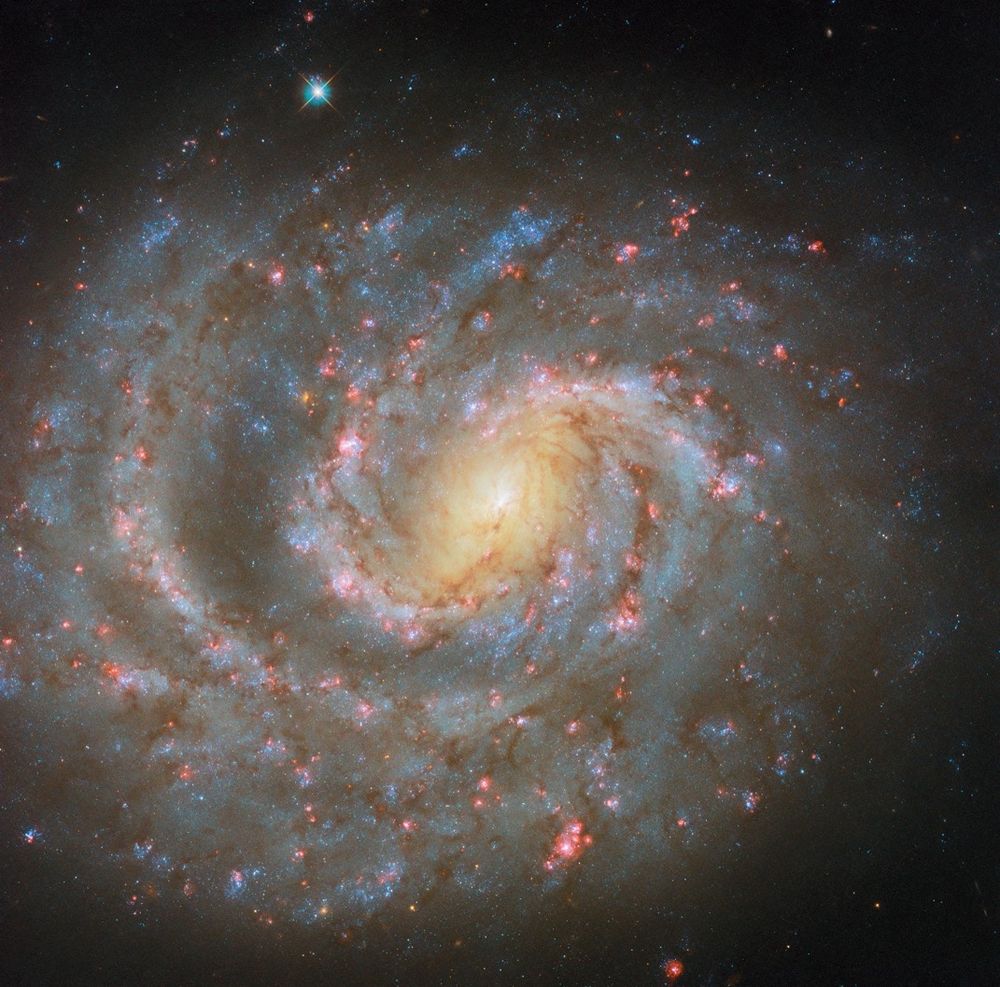
A spiral galaxy filling the view. Its disk holds many bright red spots where stars are forming, dark reddish threads of dust that obscure light, and bluish glowing areas that hold concentrations of older stars. It has a large, glowing yellow oval area at the center, from which two spiral arms wind through the galaxy’s disk. One side of the disk appears rounded (bottom of the image) while the opposite side appears somewhat squared-off (top of the image).
TODAY’S NEW HUBBLE IMAGE!! 🌌
06.12.2024 20:48 — 👍 4264 🔁 217 💬 34 📌 6
A massive spiral galaxy fills the image. A bright, yellow galactic core glows at the center, surrounded by spiral arms studded with pink stars and dark lanes of dust.
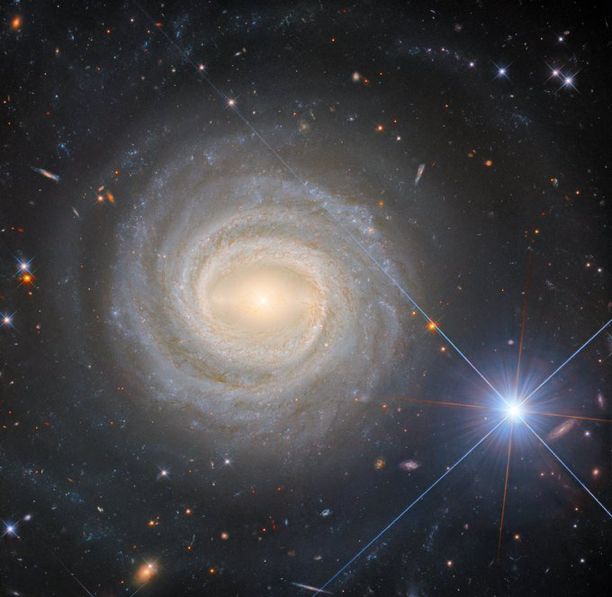
A spiral galaxy, seen face-on to the viewer. The bright center of the galaxy is crossed by a glowing bar, and it is surrounded by tightly wound spiral arms, forming a circular shape with relatively clear edges. Faraway galaxies are visible around it, along with a few bright stars, on a dark background. One star to the right of the galaxy is very large and extremely bright with long diffraction spikes.
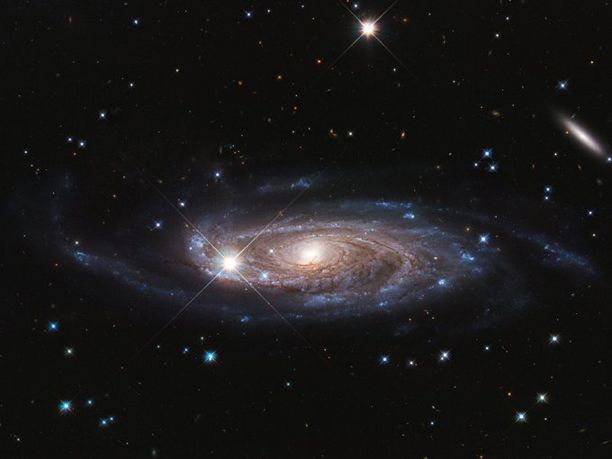
Slightly oblique view of a spiral galaxy with a glowing yellow central core and two spiral arms that wind clockwise from the center. The arms consist of dark reddish-brown dust trails that are vein-like and hazy clouds of blue stars. The outer regions of the galaxy appear bluer, with bright clusters of blue stars sparsely lining the outer edges of the spiral arms. There are a few foreground stars that have bright white or blue cores with colorful fuzzy halos and four diffraction spikes radiating from their centers. Scattered across the dark background are thousands of faint objects that vary in size, shape, and color. Most appear as small dots, ovals, or lines in different shades of orange, red, and blue.

A bright, white galactic core shines near the center of the image with a faint bar of stars extending from it, diagonally to the right. Faint, hazy spiral arms encircle the core, with several distant stars and bright blue foreground stars with diffraction spikes scattered throughout the image, all against black space.
galaxies are so beautiful 🌌
05.12.2024 02:40 — 👍 5780 🔁 436 💬 71 📌 20This eel-mouthed, xenomorph looking version of the joker is a special kind of horrifying. It hits the Uncanny Valley+growing dread spot by making him look almost normal in basic shape, but as soon as we spot the uncanny details we can't help but feel an increasing amount of dread the longer we look.
04.12.2024 13:49 — 👍 0 🔁 0 💬 0 📌 0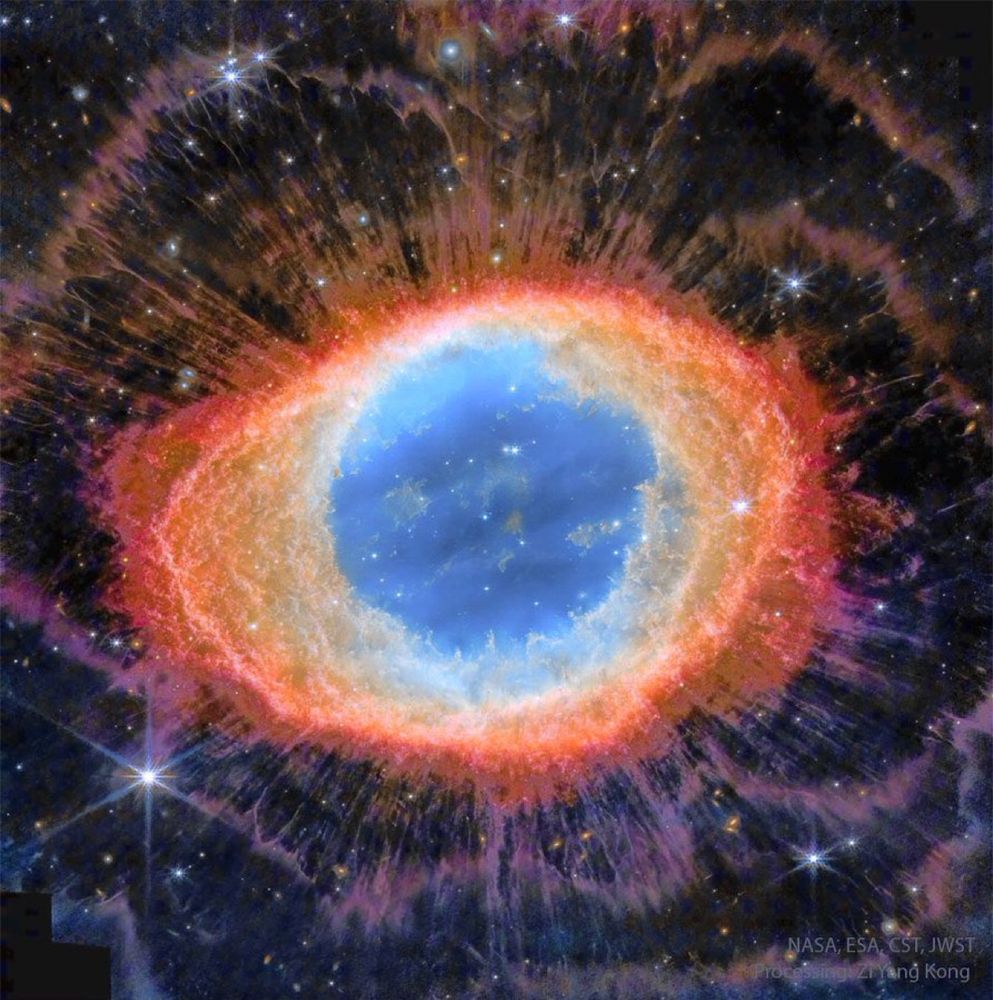
The Ring Nebula (M57), is more complicated than it appears through a small telescope. The easily visible central ring is about one light-year across, but this remarkable combined exposure by the James Webb Space Telescope and the Hubble Space Telescope explores this popular nebula with deep exposures in visible and infrared light. Strings of gas, like eyelashes around a cosmic eye, become evident around the Ring in this digitally enhanced featured image in assigned colors. These long filaments may be caused by shadowing of knots of dense gas in the ring from energetic light emitted within.
this is a combined view of the hubble and webb views of the ring nebula and oh my god it’s SO beautiful 🌌
04.12.2024 00:09 — 👍 5319 🔁 412 💬 102 📌 29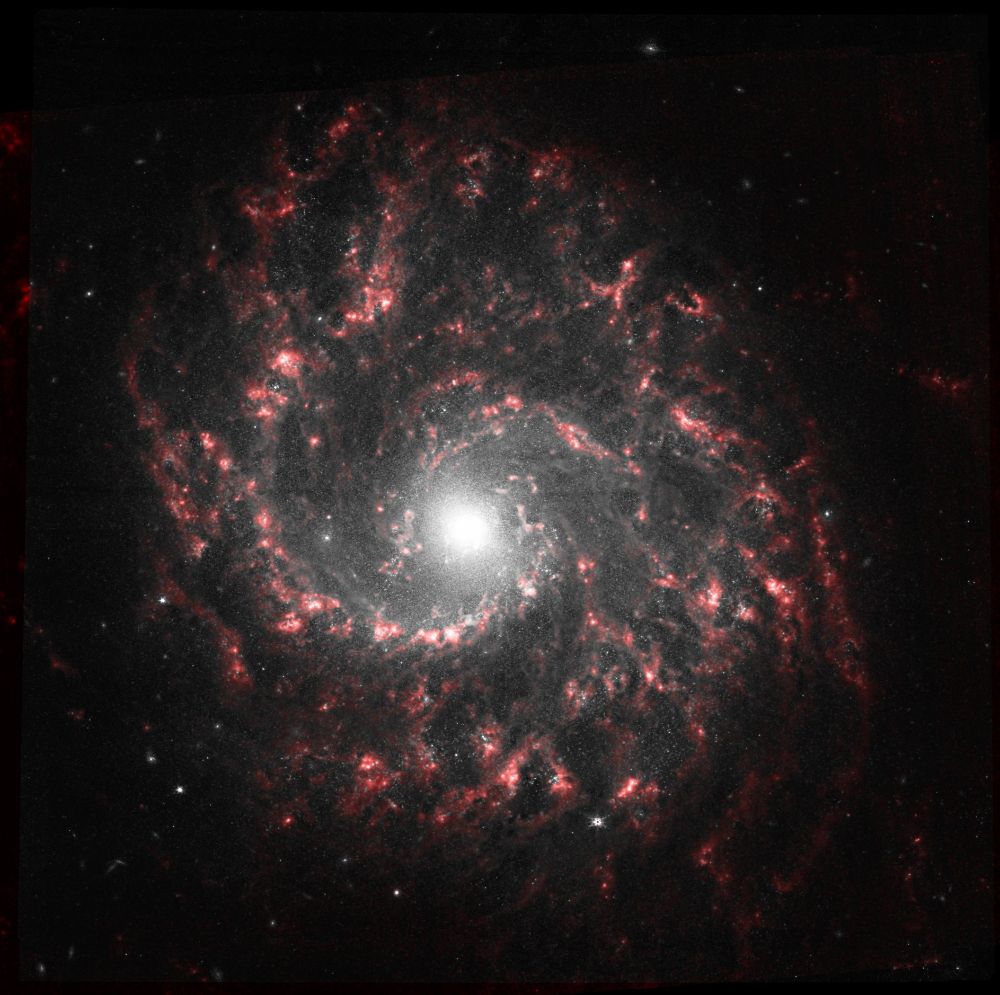
A stunning infrared image of the spiral galaxy NGC 3596, captured by the James Webb Space Telescope. The galaxy's intricate spiral arms wind outwards from a bright central core, filled with countless stars. The image reveals a wealth of detail, including dark dust lanes and bright star-forming regions that glow in shades of red and pink.
JWST image of NGC 3596.
Processed NIRCam (white) + MIRI (red) data by @yuvharpaz.bsky.social
nerdculture.de/@yuvharpaz/1...
🔭 🧪
![This image of the famous supernova remnant Cassiopeia A combines X-ray, optical, and infrared observations. The new infrared data from JWST revealed fascinating structures. [X-ray: NASA/CXC/SAO; Optical: NASA/ESA/STScl; IR: NASA/ESA/CSA/STScl/Milisavljevic et al., NASA/JPL/CalTech; Image Processing: NASA/CXC/SAO/J. Schmidt and K. Arcand]](https://cdn.bsky.app/img/feed_thumbnail/plain/did:plc:ihmutm466mt4erq6ecm6lgau/bafkreidmtoxjocqeniv4lneto463dsxrbgnjg7bppqgz6tgbgf7qu3mjda@jpeg)
This image of the famous supernova remnant Cassiopeia A combines X-ray, optical, and infrared observations. The new infrared data from JWST revealed fascinating structures. [X-ray: NASA/CXC/SAO; Optical: NASA/ESA/STScl; IR: NASA/ESA/CSA/STScl/Milisavljevic et al., NASA/JPL/CalTech; Image Processing: NASA/CXC/SAO/J. Schmidt and K. Arcand]
Image of a star that exploded 320 years ago: Cassiopeia A (Infrared + X ray).
This image was presented on AAS Nova today as JWST revealed new features in it.
🔭 🧪
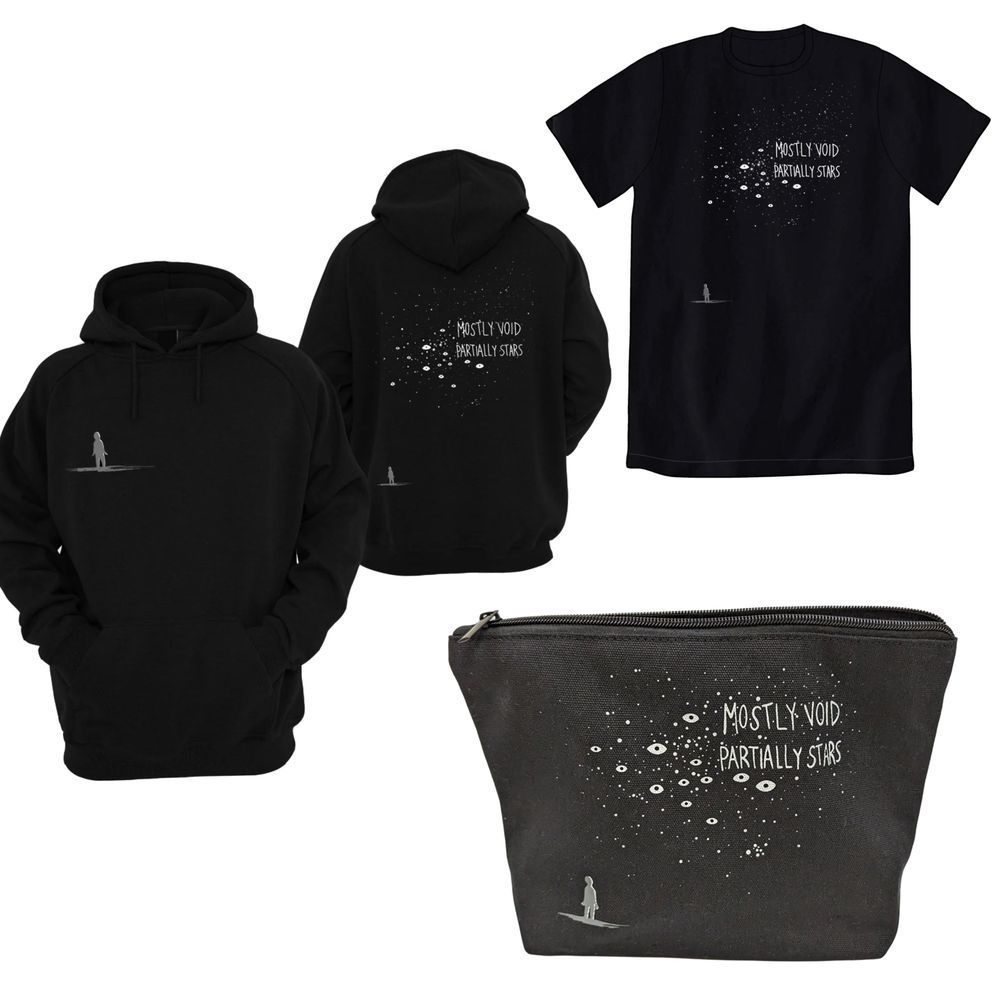
As you look at the night sky believing you are alone in this universe, a creature somewhere in that sky is looking back, believing the same. Hoodie & T-shirt: https://topatoco.com/collections/wtnv/products/cpb-wtnv-mostlyvoid Pouch: https://topatoco.com/collections/wtnv/products/cpb-wtnv-void-pouch
03.12.2024 17:00 — 👍 105 🔁 9 💬 1 📌 1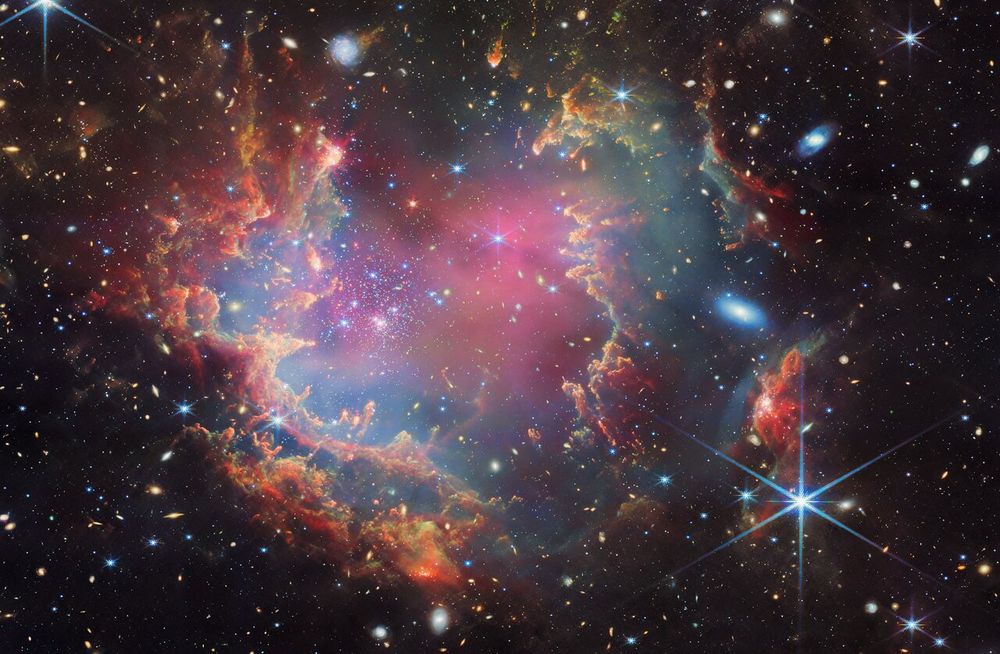
A star cluster shown inside a large nebula that has many colors of gas and dust. The material forms a circle of dark ridges and peaks surrounding the cluster, lit on the inner side, while layers of diffuse, translucent clouds blanket over them. Around and within the gas, a huge number of distant galaxies can be seen, some quite large, as well as a few stars nearer to us which are very large and bright. In the corners, the background of space is black.
This young star cluster shines like a kaleidoscope thanks to #NASAWebb’s near- and mid-infrared instruments. NGC 602 is in our neighboring dwarf galaxy, the Small Magellanic Cloud. Credit: ESA/Webb, NASA, CSA. 🔭 🧪
03.12.2024 15:01 — 👍 1664 🔁 139 💬 16 📌 7